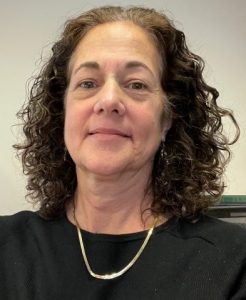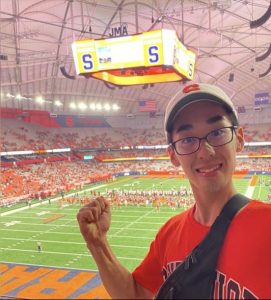By Michael Frasciello, Dean of the College of Professional Studies
Reposted from Evolllution
Not unlike traditional academic units, Continuing Education (CE) units are under increasing pressure to scale enrollments while delivering high-quality experiences to learners. This isn’t a new challenge for us. In notable ways, our students—nontraditional students—are typically more sensitive to aspects of the academic and student experience than traditional learners. What’s different now is how we meet this challenge while responding to the increasing demands placed on our units in the quasi-post-pandemic and modestly disrupted, rapidly evolving world of higher education.
It may sound like a crab walk away from the question, but I think our best response to the enrollment/quality challenge is continuing to do what we’ve always done best: meeting our students where they are. We meet students where they are when our programs are accessible, flexible, affordable, market-sensitive and result in immediately realized benefits. When we do this well, enrollments follow. When we do this in highly targeted and customized ways—that demonstrate our distinctive excellence—enrollments grow.
Distinctive excellence is where the quality question is best addressed. Quality is an experience our students perceive from their first inquiry to their last learning engagement. When the entire student lifecycle experience is perceived as high quality, we see enrollment growth, more consistent persistence and increased retention in our programs. In this context, the most important aspect of quality is doing what we have always done in our CE units: recognizing that our students bring valuable experience and perspectives into our programs and classrooms. We best address the quality question by not viewing our students through a deficit lens but through a distinctiveness lens—through their life experiences, perspectives, discipline, focus, prior learning and potential.
That is simply to say that we can address the enrollment/quality question by continuing to do the things we do best and work to do them better because our students demand and require that we do so. One of those things is our agility in responding to opportunities with market-sensitive solutions. The evolving global market for degree and non-credit programs is one such significant emerging opportunity.
Recent estimates indicate international student enrollments in higher education will be as high as 377.4 million by 2030. CE units should expect a significant portion of these students will be seeking alternative credential opportunities while they remain in-country (during and after they complete secondary education). CE units can lean into the projected unmet international demand by leveraging and marketing stackable credentialing programs, which can then be transformed into lifelong learning engagements. One version of this model has us offering customized programs through targeted pathways for international students to include recognition and credentials for the diversity of learning that develops the skills and competencies required by industry (in-country and in the U.S.).
For some CE units, leaning into the global alternative credential market represents a major shift from their status quo, and a significant risk to enrollment and quality. But shifting domestic demographics in the U.S. and the nontraditional student’s move toward the center of higher education demands CE units not be comfortable with their current foci. By not moving now to improve the way they are currently addressing the enrollment/quality question, CE units will miss the next best opportunity to differentiate themselves from other academic units in their institutions. This failure to move will leave the door open for challenges to the CE unit’s value, role and place within the institution—a “Yeah, maybe we should be doing that” suggestion from the main campus. Ceding the alternative credential and global workforce development opportunities to non-CE units will ultimately result in lower enrollment (and by extension, lower revenues) and compromised quality in programming and support.
Beyond the example of the global alternative credential market noted above, consider the growing demand for skills training among traditional undergraduate students. Typically, “skills” is a four-letter word in the traditional undergraduate curriculum domain. For many universities, it would be difficult (if not impossible) for any academic unit other than the CE unit to design, mount and deploy programs focused on teaching skills that remain relevant in new, changing and unknown contexts—skills that are more nuanced and industry-focused than competencies such as critical thinking, digital literacy, communications, etc.
All this opportunity and action to grow enrollments and improve quality—this necessity to hold and extend the ground we’ve gained through the pandemic—assumes we are properly resourced. I almost always get the resource question as in inquiry into our capacity: “Do you have the capacity to off-ramp OPM-based programs? Do you have the capacity to produce non-credit programs? Do you have the capacity to deliver a pathway program to homebound international students? Do you have the capacity to do everything that isn’t full-time, credit-oriented, on-campus instruction?”
My best response, as the most agile and entrepreneurial unit in my institution, is: “Let us worry about the capacity. You bring the opportunity; we’ll deliver the results.”
That response doesn’t mean we never say no. It rather suggests that, like many other CE units, my unit is best equipped to assess business opportunities. We have greater tolerances to run programs at break-even, as our labor and infrastructure costs are much lower than our traditional academic unit counterparts on campus. And we can stand programs up and down more quickly than traditional academic units without disrupting primary lines of business (such as undergraduate and graduate education and research).
Higher education has experienced more disruption since 2010 than in the previous 75 years. To capitalize on market contractions and current and future disruptions, CE units must break from the status quo by taking bold strategic and operational steps to produce and align differentiated and high-quality academic offerings within the changing marketplace. CE units can serve as their institution’s strategic response to create access and postsecondary educational opportunities for populations who fall outside the traditional residential undergraduate and graduate learner anywhere in the world.
When done boldly and intentionally, CE units will be the vehicle for their institution’s complex and sustainable transformational strategy to identify and prioritize opportunities for significant operational, financial and instructional changes over the next 20 years.


